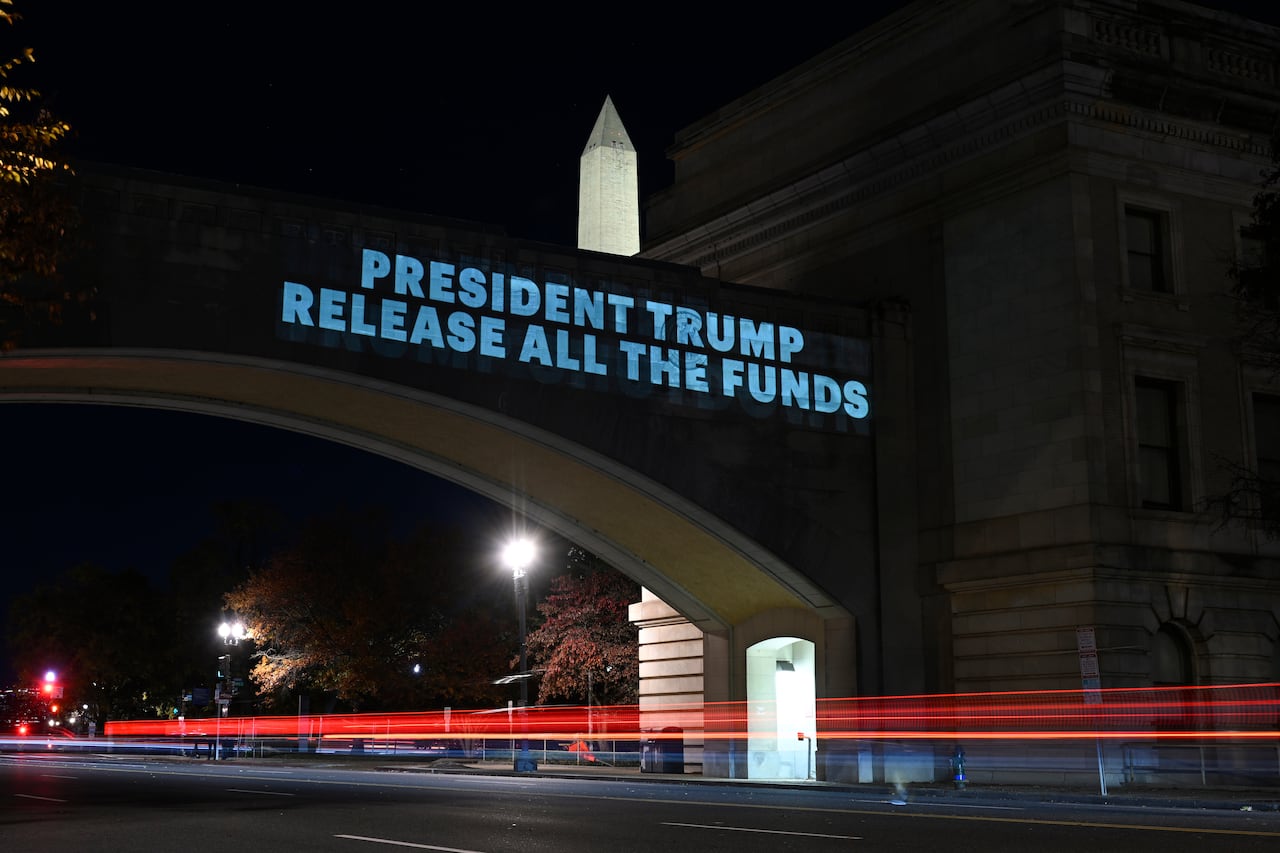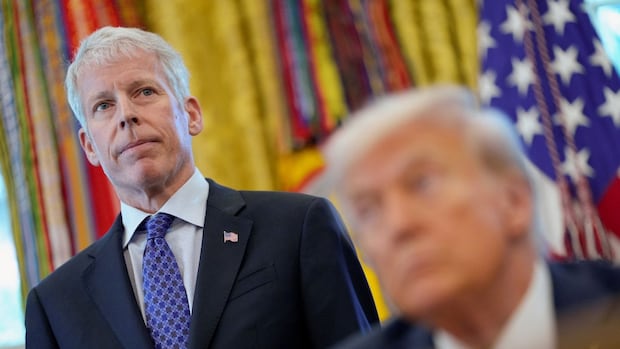The government shutdown in the United States has entered its 36th day, setting the record as the longest ever and disrupting the lives of millions of Americans with federal program cuts, flight delays and federal workers nationwide left without paychecks.
U.S. President Donald Trump has refused to negotiate with Democrats over their demands to salvage expiring health insurance subsidies until they agree to reopen the government. But skeptical Democrats question whether the Republican president will keep his word, particularly after the administration restricted Supplemental Nutrition Assistance Program (SNAP) food aid despite court orders to ensure funds are available to prevent hunger.
Trump, whose first term at the White House set the previous government shutdown record, blamed the shutdown as a “big factor, negative” for the Republican Party’s losses in off-year elections on Tuesday, and he repeated his demands for Republicans to end the Senate filibuster as a way to reopen government — something senators have refused to do.
Trump pushed for ending the Senate rule, which requires a 60-vote threshold for advancing most legislation, as a way to steamroll the Democratic minority on the shutdown and a long list of other party priorities.
Republicans now hold a 53-47 majority, and Democrats have been able to block the House-passed bill that would fund the government, having voted more than a dozen times against.
“We must get the government back open soon,” Trump said during a breakfast meeting Wednesday with Republican senators at the White House.
Trump has remained largely on the sidelines throughout the shutdown, keeping a robust schedule of global travel and events, including at his private Mar-a-Lago club in Florida.
Trump caused some confusion earlier Tuesday when he appeared to threaten SNAP benefits unless Democrats voted to reopen the government — despite court orders mandating that the administration keep the nation’s largest food program running.
His press secretary, Karoline Leavitt, tried to walk back Trump’s social media post later in the day, saying the administration continues to support SNAP using contingency funding, which is what two separate judges ordered on Monday.
The U.S. Department of Agriculture said last month that those benefits for November wouldn’t be paid due to the federal government shutdown. That set off a scramble by food banks, state governments and the nearly 42 million Americans who receive the aid to find ways to ensure access to groceries.
Shutdown costing U.S. billions each week
The congressional leaders are at a standoff and House Speaker Mike Johnson, Republican from Louisiana, sent lawmakers home in September after they approved their own funding bill, refusing further negotiations. In addition, Johnson has refused to have Arizona Democrat Adelita Grijalva, who won a special election in September, sworn in until the shutdown is over.
In the meantime, food aid, child care money and countless other government services are being seriously interrupted. Hundreds of thousands of federal workers have been furloughed or are expected to come to work without pay.
Transportation Secretary Sean Duffy predicted there could be chaos in the sky next week if air traffic controllers miss another paycheque. Labour unions put pressure on lawmakers to reopen the government.
Estimates of weekly GDP losses as a result of the shutdown have varied widely, from KPMG’s assessment of $10 billion a week to the $30 billion price tag from Moody’s Analytics.
Senate Majority Leader John Thune, Republican from South Dakota, said this has been not only the longest shutdown but also “the most severe shutdown on record.”
He has urged Democrats to accept his overtures to vote on the health care issue and keep negotiating a solution once the government reopens, saying no one wins politically from the standoff.
‘The pace of talks have increased’
Central to any resolution will be a series of agreements that would need to be upheld not only by the Senate, but also the House, and the White House, which is not at all certain in Washington, D.C.
Senators from both parties, particularly the powerful members of the chamber’s appropriations committee, are pushing to ensure the normal government funding process in Congress can be put back on track.

“The pace of talks have increased,” said Democratic Sen. Gary Peters of Michigan, who has been involved in conversations.
Among the goals is guaranteeing upcoming votes on a smaller package of bills where there is already widespread bipartisan agreement to fund various aspects of government such as agricultural programs and military construction projects at bases.
More difficult, a substantial number of senators also want some resolution to the standoff over the funding for the Affordable Care Act subsidies that are set to expire at year’s end.
WATCH | Unprecedented situation for nuclear agency:
The Trump administration will furlough about 1,400 employees at the National Nuclear Security Administration, the agency that manages the U.S. nuclear weapons arsenal, due to the government shutdown, the Department of Energy said.
Trump sets another shutdown record
With insurance premium notices being sent, millions of people are experiencing sticker shock on skyrocketing prices. The loss of enhanced federal subsidies, which were put in place during the COVID-19 pandemic and come in the form of tax credits, are expected to leave many people unable to buy health insurance.
Republicans are reluctant to fund the health-care program, also known as Obamacare, without changes, but negotiating a compromise with Democrats is expected to take time — if a deal can be reached at all.
Thune has promised Democrats at least a vote on their preferred health-care proposal as part of any deal to reopen government. But that’s not enough for some senators, who see the health-care deadlock as part of their broader concerns with Trump’s direction for the country.
Trump’s approach to the shutdown stands in marked contrast to his first term, when the government was partially closed for 35 days over his demands for money to build the U.S.-Mexico border wall.
At that time, he met publicly and negotiated with congressional leaders. Unable to secure the money, he eventually relented.
While the two longest shutdowns have occurred with Trump as president, arguably the most consequential shutdown occurred in 1995-96. During that interruption, with paid staffers on furlough, then-president Bill Clinton and unpaid intern Monica Lewinsky engaged in the first of several sexual encounters.
After Clinton lied about the relationship in a civil case deposition, the Republican-led House moved forward with the first presidential impeachment in 130 years. Clinton, like president Andrew Johnson in the earlier example, was acquitted in the Senate and stayed in office.






